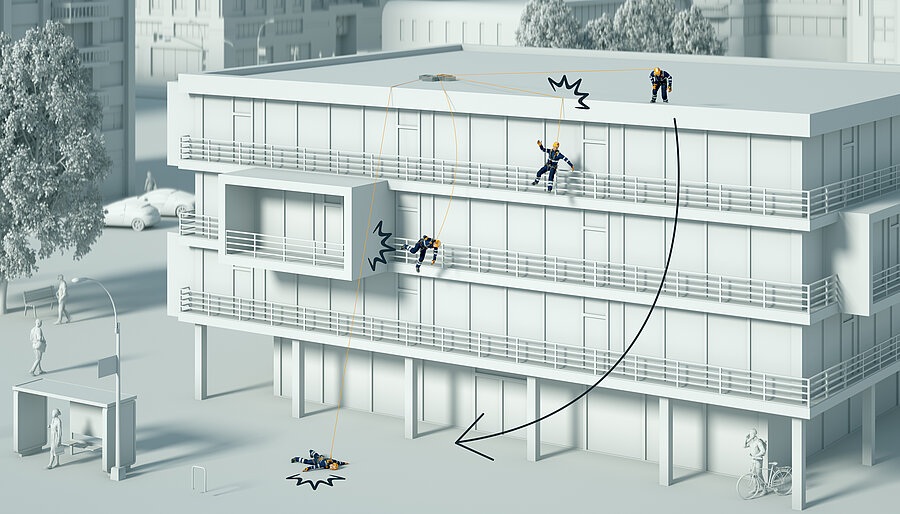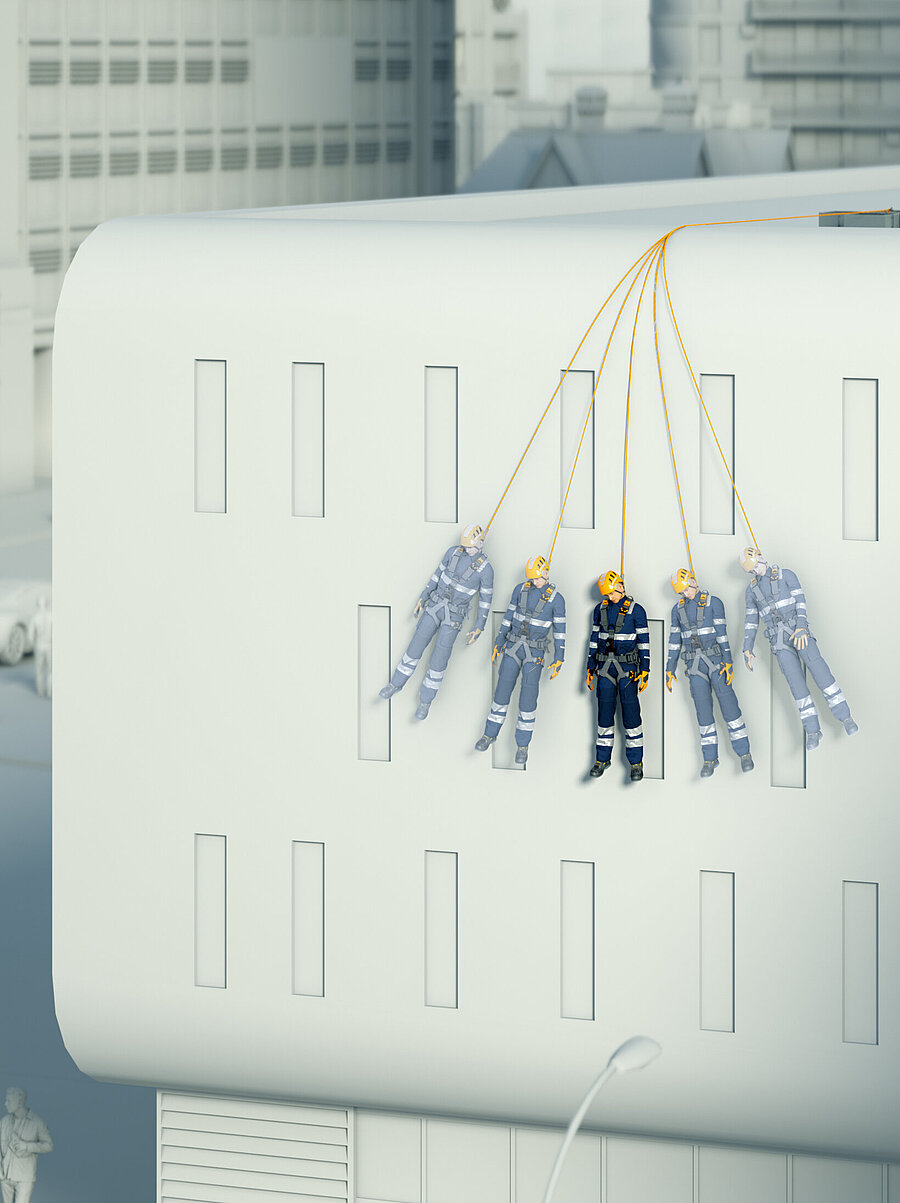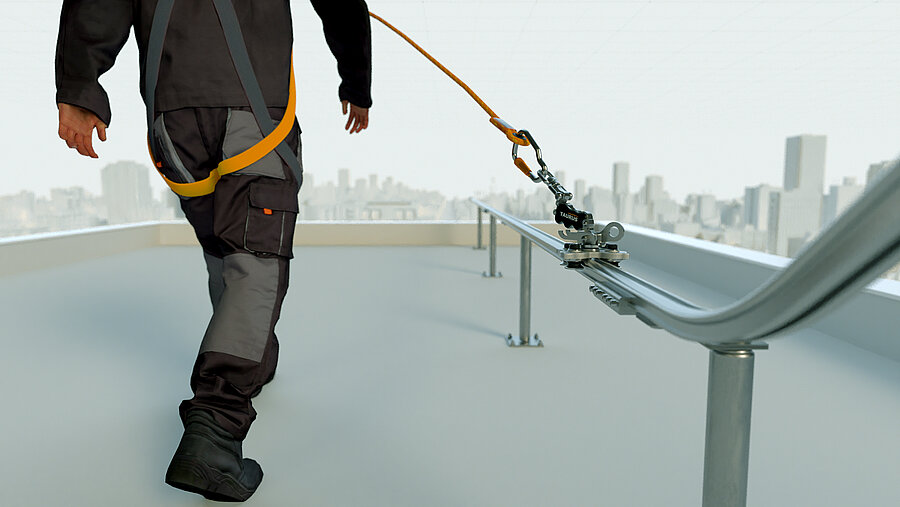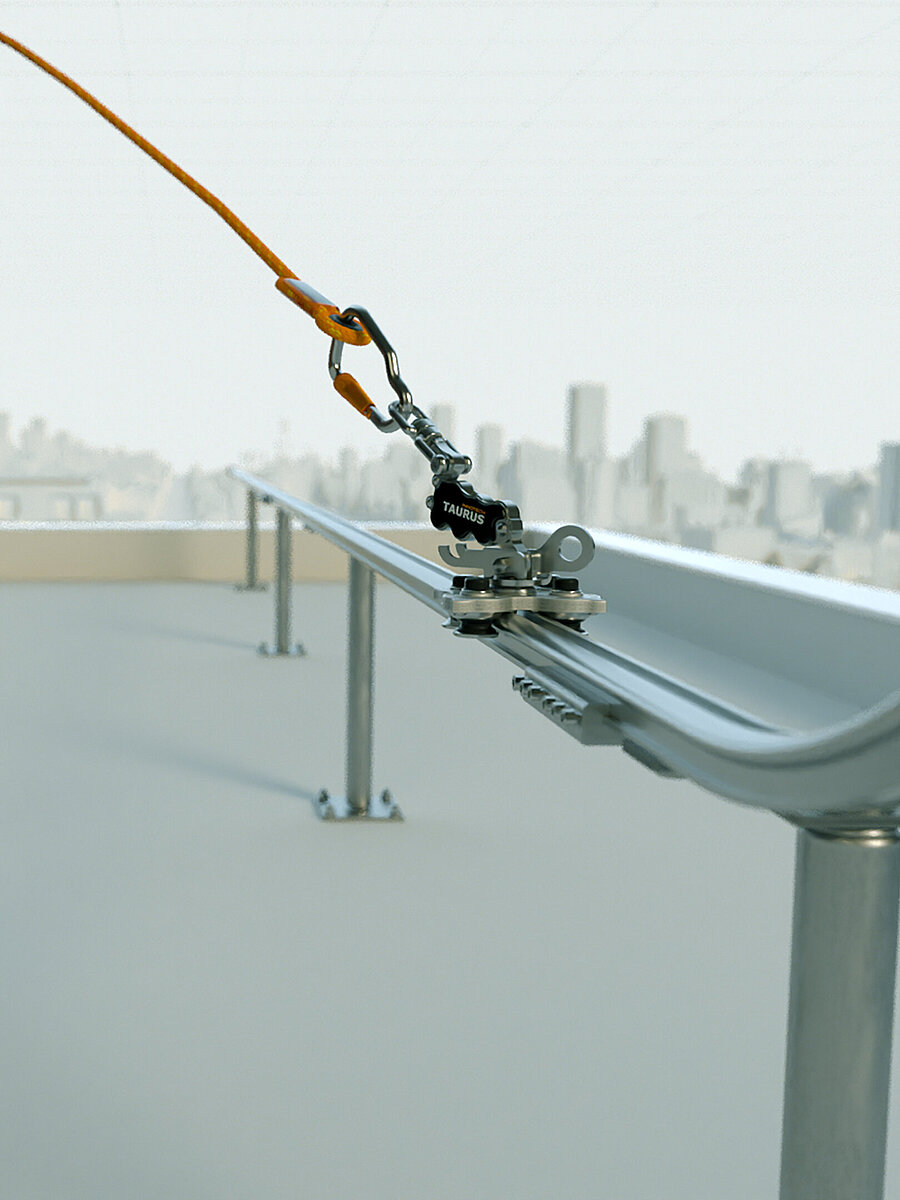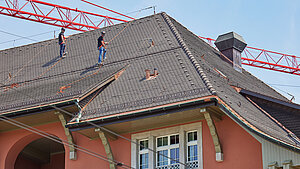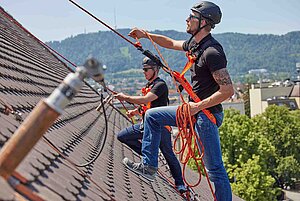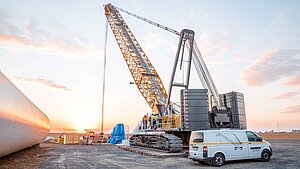Anyone who works in fall-risk areas has probably already heard of pendulum falls. Anyone unfamiliar with the term should definitely be aware of the dangers involved, because, like an unprotected fall, this type of fall is for good reason a dreaded effect of a non-optimal fall protection system.
How does a pendulum fall arise?
As already mentioned above, a pendulum fall is a protected fall in which the person who falls swings to and fro. This situation arises, for example, if the protected person is not suspended in a straight line, i.e. absolutely vertically, from the single anchor point, or the lanyard has been set incorrectly.
Under these circumstances, the person does not simply fall downwards if a fall occurs, but instead swings to and fro, as expected from the laws of physics. This swinging can have severe consequences if the person is dragged along the wall of the building or even collides with other objects along the wall. In this case, the forces working on the body can be life-threatening.
A pendulum fall occurs only when the fall protection system used is not appropriate for the situation or has been used incorrectly.
What are the dangers of a pendulum fall?
If the pendulum of a clock is considered, and the force with which it swings to and fro, it soon becomes clear that a hugely heavier weight, such as that of a human being, swings with much more momentum. Depending on the length of the lanyard and the radius at which the pendulum fall occurs, the force operating also increases.
The injuries which this creates are known as secondary injuries. They are in addition to the physical effects of the fall, and include:
- Abrasions
- Crushing
- Bruising
- Fractures
Attention: The injuries from a pendulum fall can be so serious as to be life-threatening.
How can a pendulum fall be prevented?
From the aspect of the material used, the most certain way of preventing a pendulum is the use of a lifeline system or a rail system instead of a single anchor point.
When both systems are used correctly, the anchor point effectively moves with the person. The fall remains vertical. The probability of swinging after a fall is thus reduced to almost zero.
Ideally a fall never occurs in the first place. If used correctly, a fall protection system which is used as a restraint system prevents the protected person from accessing the area where a fall is possible, i.e. beyond the fall edge.
However, in the end the human factor, i.e. the user, always plays a role: the best safety system cannot protect if it is used incorrectly. That is why it is so important that the users are expertly trained and are also aware of all dangers.
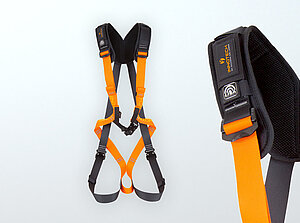
Personal Protective Equipment PPE
Whether on roofs, scaffolding, ladders, facades, or other fall-risk areas, compliant high-quality equipment for fall protection is an absolute must.
Secure connection between user and safety system
Our PPE personal protective equipment creates a secure connection between user and fall protection systems. Depending on application and situation, it provides optimum comfort, and impresses through its top quality.
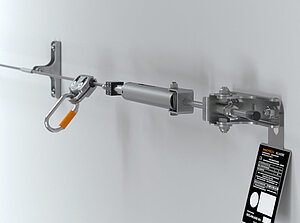
Lifeline Systems AIO
Our powerful AIO lifeline system provides a reliable and versatile solution.
The powerful lifeline system that offers a whole host of variants
Whether on a flat or pitched roof, in an industrial environment, in the energy industry, on poles, or in other application areas, the topic of fall protection is ever-present.
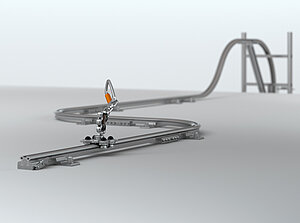
Rail System TAURUS
Curves, pitches, sloping positions, and of course straight runs: the TAURUS rail system is as versatile as the potential areas of application.
The strong and flexible rail system TAURUS
The system provides continuous fall protection along the entire run of rail, regardless of where the fall-risk areas are located or how they are arranged.
![[Translate to Englisch:] [Translate to Englisch:]](https://www.innotech-safety.com/fileadmin/_processed_/5/1/csm_Pendelsturz_9793dd3cfa.jpg)
![[Translate to Englisch:] [Translate to Englisch:]](https://www.innotech-safety.com/fileadmin/_processed_/c/5/csm_Pendelsturz-Hindernis-mit-Pfeile_8eba4a175b.jpg)
![[Translate to Englisch:] [Translate to Englisch:]](https://www.innotech-safety.com/fileadmin/innotech/absturz-wiki/Pendelsturz/Pendelsturz-Volkshaus-Zuerich.jpg)
